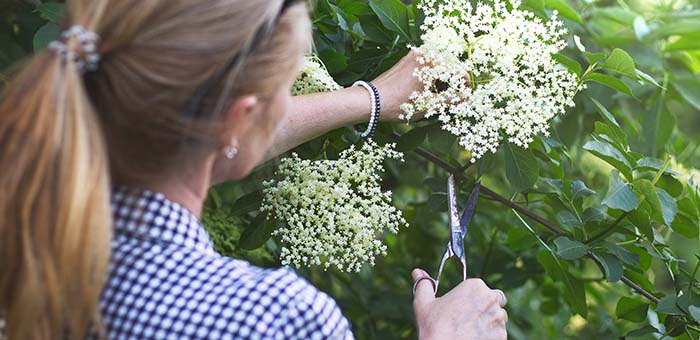Home Medicine Kit

Home Remedies
Nowadays, as a society, we are largely dependent on doctors, surgeons or complementary therapists for our health care. But this wasn’t always the case. Not so long ago most households would have used herbs and foods to treat injuries and illnesses. Used sensibly, alongside medical care where necessary, a home remedy kit is an inexpensive and useful asset for any household. Think of it as a more comprehensive version of a First Aid Kit. Many herbal creams and remedies are available to buy ready made, or you can make your own.
Needs will vary depending on the age of the people in the home but this month we’ll be giving you some tips for putting together a home remedy kit to see you through most minor accidents, injuries and illnesses. Look for the posts on Herbal Remedies, Essential Oils and Supplements.
Herbal Remedies
Human beings have used herbs to heal the body and mind for much of our history. Many traditional herbal remedies and practices are used today, with some cultures totally dependent on them. Even modern medicine uses many compounds derived from plants or copied from plants in the manufacture of drugs. Herbs can be taken in many ways; as teas, tinctures or capsules; and used topically in the form of oils, creams and lotions.
See the posts on Essential Oils and Supplements for more tips on what to put in your home remedies kit.
There are hundreds of herbs to choose from but here are a few to get you started:
Aloe Vera – aloe vera is a plant that is easy to grow in a pot on a windowsill. The sap from the leaves has anti-inflammatory and soothing properties. It is a safe and effective remedy for burns, sunburn and other mild skin irritations. Just break off a leaf and slice it open. Apply the sap to the affected area with a clean fingertip. Alternatively, aloe vera gels are available in health stores.
Arnica cream – an essential for any first aid kit, arnica cream and homeopathic capsules can be used for any physical trauma such as falls, bruises, sprains, wounds and muscle soreness. It is not advisable to use it on broken skin.
Calendula Cream – calendula has soothing, healing, anti-bacterial and anti-fungal properties. It can be used on cuts, grazes and rashes such as nappy rash. It can also be helpful for eczema and skin ulcerations.
Chickweed Cream – similar to calendula, chickweed has calming and healing properties and can be used to soothe many skin problems including eczema and rashes.
Echinacea – echinacea has anti-bacterial and anti-viral properties and is generally supportive to the immune system. The tincture can be applied to stings, bites and wounds as well as taken internally for upper respiratory tract infections, colds and sinusitis.
Elderberry Elixir – elderberries are rich in vitamin C and bioflavanoids which are both supportive to the immune system. A traditional remedy for colds and flu.
Garlic – garlic is a broad spectrum antibiotic and anti-fungal agent. It can be applied topically to skin infections but care should be taken as it can burn the skin. It can also be eaten to help fend off respiratory infections and viral infections such as the flu. It also has protective effects on the cardiovascular system, helps to lower blood pressure and thins the blood so if you are on blood thinning medication consult with your doctor before taking garlic internally.
Ginger – ginger has anti-inflammatory properties as well as being a good digestive tonic. It can be taken for nausea, travel sickness, arthritis, rheumatism and poor circulation. Use ginger root or dried ginger in cooking or make it into ginger tea: pour boiling water onto chopped up ginger root, cover and leave to steep for at least 5 minutes or longer for a stronger brew.
St John’s Wort – you may have heard of St John’s wort as a remedy for depression but it can also be used topically on bruises, wounds, sunburn, herpes, varicose veins, shingles, sciatica and nerve pain.